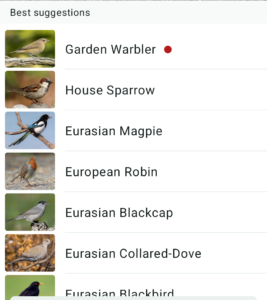I’ve always been somebody who loves to learn new things, and who enjoys all things nature.
But my desire to learn what a flower is, or what a tree is, or what an insect is, is relatively new to me.
It’s no longer enough to sigh, “Oh, that’s so pretty”.
I now need to sigh, “Oh, that ______ is so pretty”.
I have never been massively concerned about identifying birds, however. I know a robin from a blue tit, and a magpie from a pigeon, but I’m usually far more interested in the things around me on the ground.
Give me a bed of forget-me-nots or a ladybird any day.
But then three friends recommended the same app to me in a matter of weeks. They knew I was doing a lot of wandering in nature and appreciating the parks and rivers around my city, and they all said I should download Merlin.
By the third recommendation, I was intrigued by the synchronicity. So I did.
I discovered that, even close to a busy city centre, there was a wide variety of birds frolicking in the area
Then, it’s safe to say, I got obsessed.
Merlin is a free bird identification app from the Cornell Lab of Ornithology that “helps you identify birds you see and hear. Merlin is unlike any other bird app—it’s powered by eBird, the world’s largest database of bird sightings, sounds, and photos”.
And it is addictive
I started to open the app whenever I had a cup of tea outside, and I discovered that, even close to a busy city centre, there was a wide variety of birds frolicking in the area.
More and more, I let Merlin listen to my surroundings and became fascinated with what it found.

From there, I got even more curious. Will there be different birds singing at different times of day? Different times of year? How will the birds vary across the city, across the country, and across the world?
I also became familiar with the birds that made regular appearances in my area, compared to the rarer ones (a garden warbler was especially exciting, which is a weird thing to come out of my mouth, but it’s true).

This growing enthusiasm for identifying birds using the app also meant I had even more senses to pay attention to, and to tune into, on my wanderings in nature.
Now, not only was I looking for flowers and insects and fish and trees, I was also listening out for interesting birdsong.
It’s mindfulness in action, whether I’m actively using the app or not. And anything that can get us to take more notice of what’s surrounding us, especially in a world that feels increasingly like it’s spiralling out of control, can only be a good thing.
When Merlin has identified a bird, you can tap on it and see pictures, read more about the species, and listen to others’ recordings of the same bird. So it’s an impressive tool to learn through – and to use to inspire further research, if you want to know more.
This all helps us to understand the world around us even better – even if, like a friend of mine, you use it to find out the kind of bird you’ve been cursing for weeks because it’s on your roof and it won’t shut up.
Of course, I’ve got no idea how accurate Merlin’s suggestions are, but the consistency in the species it identifies repeatedly in my area suggests that it knows a blackcap from a blackbird.
Plus it’s got considerably more of a clue than I have, so even if it’s only right most of the time, I’m winning.

